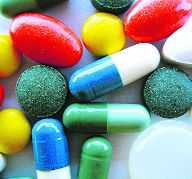Vishav Bharti
Tribune News Service
Chandigarh, October 17
Punjab’s de-addiction programme may be on the path of introducing a completely new addiction — the de-addiction drug itself, which has been found to contain up to 25 per cent more of the active salt than legally allowed.
Seen in the context of large seizures of the medicine stocked illegally and patients being given the drug above the prescribed limit, this is an alarming development, say experts.
There are just four major suppliers of the salt, buprenorphine, in Punjab, selling under different brand names. The medicine from two of these has been found to contain the salt far above the limit, while one had below the dose limit listed on the label. The fact came to the fore when the state’s Food and Drug Administration got the medicines tested at the State Drug Testing Laboratory recently.
As per the documents, the samples were collected from different de-addiction centres and chemist shops. The medicines contained 17-25 per cent more salt than allowed.
The drugs are sold by three companies — Rusan Pharma (Addnok-N), Maan Pharmaceuticals (Cizdol-N) and SBS Biotech (QTRUGS). As mentioned on the strips of Addnok-N, the quantity of buprenorphine should not be more than 2 mg per tablet. However, it was found to contain around 25 per cent more than that. Similarly, Cizdol-N contained 17 per cent more. On the other hand, QTRUGS-0.4 was found to contain 14 per cent less than the dose mentioned. As per the Drugs and Cosmetics Rules, 1945, the buprenorphine salt cannot vary more than 10 per cent of the dose mentioned.
The government, in its internal communication, has put these medicines in ‘Not of Standard Quality’ category. Buprenorphine is prescribed as per a specified protocol. If the drug contains more or less than the dose, the entire protocol is vitiated, notes the government communication.
Satish Chandra, Additional Chief Secretary, Health, said it was a matter of serious concern. “We have recommended suspension of the supply of the particular medicine from the three drug companies,” he said. A senior official dealing with the de-addiction programme, who did not wish to be identified, said it was common practice among manufacturers to make the medicine more potent to get the addicts hooked to their brand.
Besides resulting in side-effects, overdose of the de-addiction medicine causes the prescription to not yield the desired results. Psychiatrists say it can have serious implications for the entire mental health programme. “Buprenorphine is used as an oral therapy mainly for intravenous drug abusers to protect them from diseases that spread trough syringe sharing, such as HIV, AIDS and hepatitis,” says Dr Sandeep Kumar, former vice-president of the Indian Association of Private Psychiatry, Punjab.
Dr D Basu, Professor, Department of Psychiatry, PGIMER, Chandigarh, says patients can become habituated to a particular brand with high dose, and other brands comprising normal dose would not work on him.
With this development, many chemists and de-addiction centres have also come under the scanner. In August, the Food and Drug Administration had raided a wholesaler in Ludhiana and seized 1.6 lakh tablets of buprenorphine-nalexone combination (worth Rs 46 lakh) stored illegally.
Unlock Exclusive Insights with The Tribune Premium
Take your experience further with Premium access.
Thought-provoking Opinions, Expert Analysis, In-depth Insights and other Member Only Benefits
Already a Member? Sign In Now










